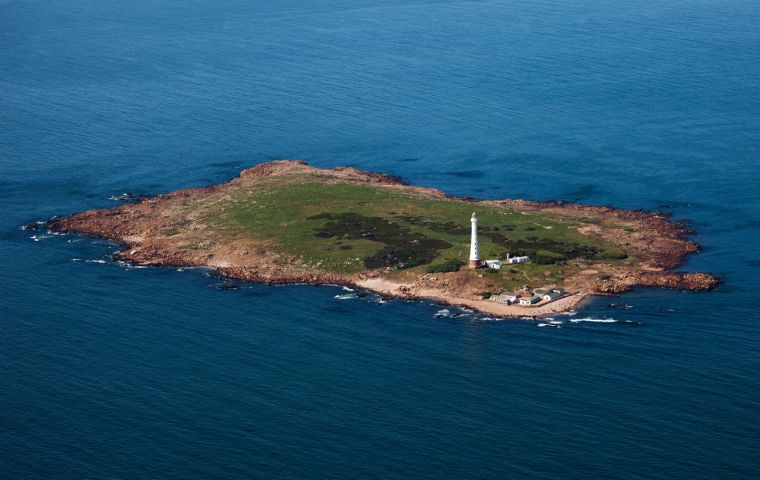MercoPress. South Atlantic News Agency
Leonardo DiCaprio welcomes Uruguay's environmental initiative
 Lobos Island has been a crucial strategic geopolitical and economic center since colonial times
Lobos Island has been a crucial strategic geopolitical and economic center since colonial times American actor and environmental activist Leonardo DiCaprio welcomed through his Instagram account Uruguay's decision to declare Lobos Island, a group of 22 rock formations in the South Atlantic off Punta del Este, a protected natural area to be shielded from buildings and urbanization developments. It was also said to have frustrated Maldonado Mayor (governor) Enrique Antía's plans for other tourist attractions.
Lobos Island and its submerged environment became the first entirely fully oceanic of Uruguay's 19 protected areas. The Environment Ministry also pointed out that the initiative's goal was to grant the necessary protection to preserve its ecosystems and promote scientific research. Marine protected areas are intended to prevent coastal erosion and pollution, provide fishing resources, and help mitigate and diminish the effects of climate change.
As per the new norm, Uruguay's Environment Ministry will “determine the form and conditions under which the natural protected area will be administered, in coordination with the Ministry of Livestock, Agriculture and Fisheries and/or the Ministry of National Defense, as appropriate and within the scope of their respective competences.”
In 2018 Di Caprio, together with Fisher Stevens and Martin Scorsese, released the documentary “Before It's Too Late”, in which they explore the effects of climate change around the world. “You can either make history or be vilified,” DiCaprio -a UN Messenger of Peace- once said about world leaders adopting initiatives to either tackle or disregard climate change.
The 43.5-hectare Lobos Island is some 8 kilometers off the coast of Punta del Este. The formation also includes the smaller, 1.3-hectare Lobos Islet. They are home to two species of marine mammals (the South American fur seal and the sea lion), as well as a resting place for seals, such as elephant seals and Weddell seals. The area is “crucial for the migration of the southern right whale and habitat for several species of dolphins, killer whales, and sea turtles,” the Environment Ministry explained.
Antía was reportedly planning to build a heavy structure to dock private yachts and other vessels. In light of the area's new status, he argued that an opportunity to promote tourism was lost. In his view, Uruguay gave in to pressure from environmentalist groups at the expense of tourism projects that could have been developed in a manner respectful of the natural milieu. He had envisioned a “controlled” tourist route, where visitors could disembark and explore the island while protecting local species by means of walkways to keep people away from sea lions. As it is, people have been deprived of a valuable recreational and educational resource, he maintained.
Lobos Island has been a crucial strategic geopolitical and economic center during colonial times, linked to the whaling and sea lion industry. It also features the 1906-built Lobos lighthouse, crucial to navigation.
Since mid-2021, the Environment Ministry has been working with the National Directorate of Aquatic Resources, the University of the Republic, and the National Museum of Natural History to devise a protectionist scheme for marine areas of conservation relevance.




Top Comments
Disclaimer & comment rulesCommenting for this story is now closed.
If you have a Facebook account, become a fan and comment on our Facebook Page!